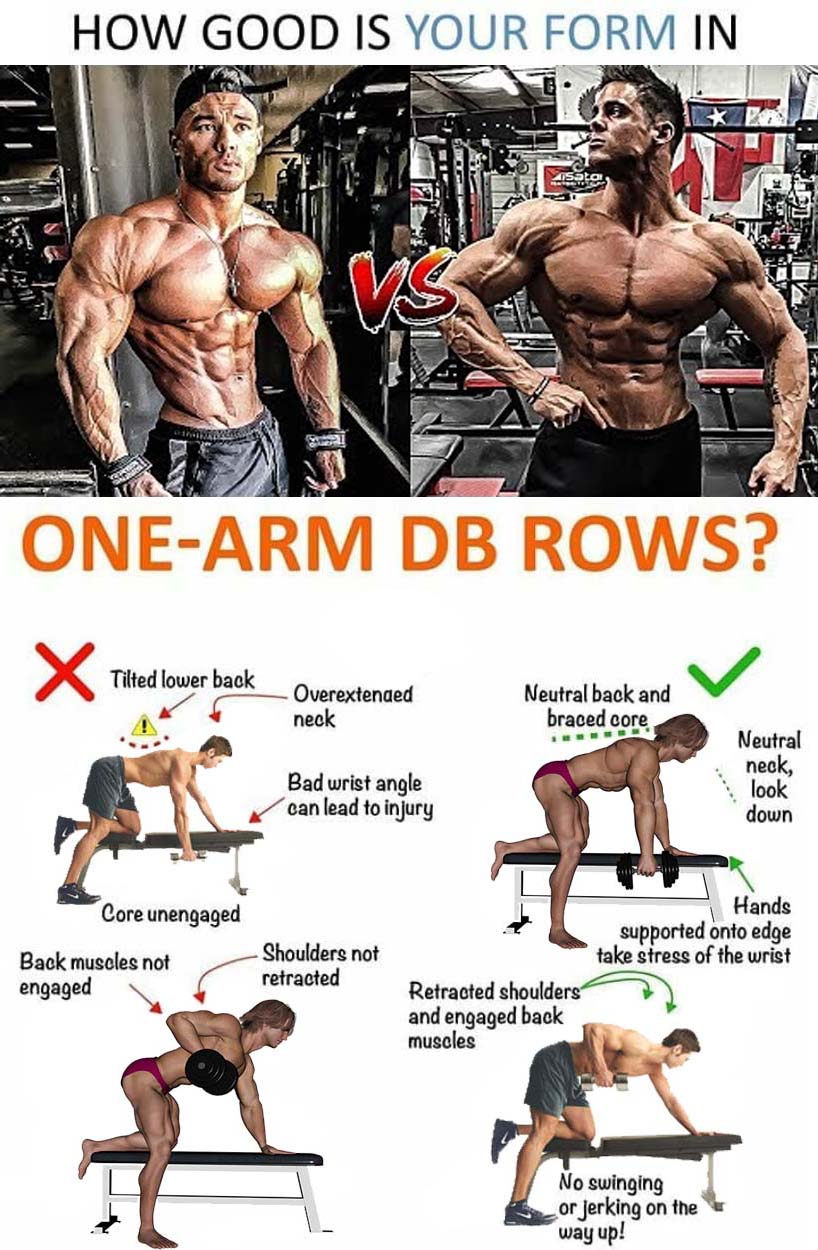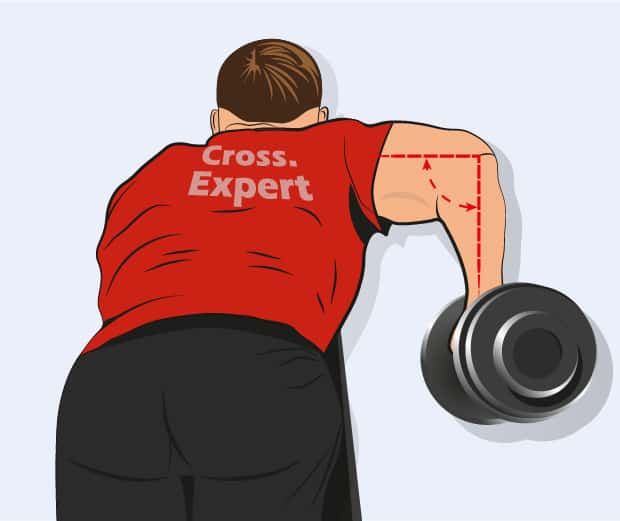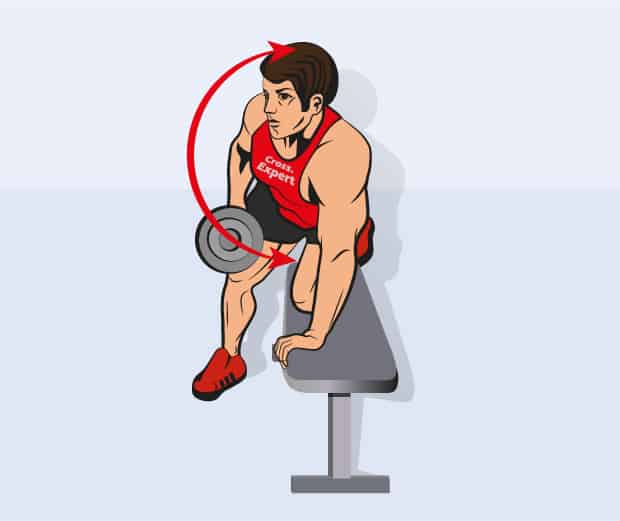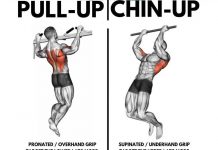One-Arm Dumbbell Row is an exercise without which it is impossible to build a truly voluminous and muscular back. This exercise, like all other horizontal traction for the back, is aimed primarily at increasing the thickness of the back. Perform it in one workout with basic vertical pulls on the back (pull-ups on the bar, pull the upper block with a wide grip) and gain a strong, voluminous and proportional back, each muscle of which will have a good relief.
Almost every person working in the office and leading an inactive lifestyle has an S-shaped scoliosis. At the same time, his back does not look exactly even. Therefore, the one-sided nature of the movement will also help correct the imbalance in the muscular development of the back, if any.
One-Arm Dumbbell Row is universal – in this exercise it is easy to feel the stretching and contraction of the latissimus dorsi muscles. It is suitable for almost every athlete, if there are no serious contraindications, which we will also discuss in today’s article.
What muscles work?
The main working muscle group when we’r a row incline one hand dumbbell is the latissimus dorsi. Moreover, we can vary the load one or another segment of this muscle group, depending on the level of the tilt of the body. For example, when dumbbell row on a bench with one hand, the angle of inclination of our body is almost 90 degrees. In this embodiment, the lower part of the latissimus dorsi works more. If we do dumbbell traction with one hand, focusing on a with upper support, for example, a dumbbell row, the load main falls on top of the widest back.
In addition to the widest back, the rear deltas, rhomboid and trapezius muscles, extensors of the spine, abs and biceps take part of the load.
Like any strength exercise, one hand dumbbell row brings undeniable benefits in muscle development. But, at the same time, there are some contraindications to its implementation. There are few of them, but every athlete must know about them in order to avoid the risk of injury or aggravation of existing health problems.
[wp_ad_camp_2]
Try also such an exercise in conjunction with One-Arm Dumbbell Row this pull-up to make the back not only thicker and more massive but also wider!
The benefits of One-Arm Dumbbell Row
See Variation – Dumbbell Row
The biggest benefit of dumbbell traction in tilting with one hand is that, unlike the other basic back exercises, this exercise works out the muscles of our back in more in isolation. We do not have to be distracted by constantly keeping the body in the correct position and preserving the natural deflection in the lumbar spine.
Alternating different inclinations with each training week, we work out the latissimus dorsi muscles across their entire surface. This will certainly lead to an increase in strength and muscle mass of the back. Well-developed latitudinal muscles of the back create an athletic V-shaped silhouette, improve posture. They also visually expand the shoulder girdle and chest. One-handed dumbbell traction can increase strength in basic exercises with free weights, such as deadlift, bench press, or chest lifting.
Exercise technique One-Arm Dumbbell Row
The competent technique of One-Arm Dumbbell Row, observed in all details, is the key to success in any sports discipline, whether it is bodybuilding, powerlifting or functional training. It is especially important to observe the technique of One-Arm Dumbbell Row to the belt to crossfit athletes. This is due to the fact that most of them try to perform exercises in the most explosive style in order to meet the shorter time interval.
However, we strongly recommend that you make an exception for dumbbell traction with one hand while standing in an incline. Because any technical error can lead to serious consequences, harm your health and reduce your progress to nothing.
Starting position
[wp_ad_camp_3]
Take a dumbbell and take the right starting position. You can pull the dumbbell with one hand at rest, with one arm and knee resting on a horizontal bench while tilting the body down almost to the right angle. So the load will be emphasized on the lower part of the latissimus dorsi.
Another option is to pull the dumbbell in an incline, standing with both hands alternately. In this case, you need to lean with one hand on a the place for dumbbell or other elevation place, put your foot forward and take your pelvis back a little, while maintaining a torso of about 45 degrees. In this position, the upper part of the latissimus muscles, as well as the rhomboid muscle and the posterior delta, will work more. Decide in which performance you feel the back muscles work better, or alternate these options at each training session.
Dumbbell lift
[wp_ad_camp_4]
Start lifting the dumbbell up by exhaling. The movement should be made a little along the arc. The dumbbell not only rises, but also moves to the belt – so the load on the latissimus dorsi will be peak. Try not to include biceps in the work, for this, focus on the movement of the shoulder blades. Our task is to raise the blade as high as possible and shift it a little to the center. At the same time, the elbow should be located slightly above the level of the ribs.



















































